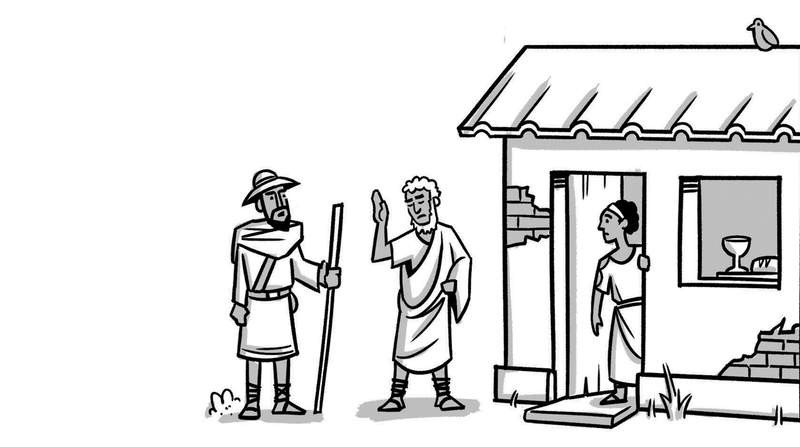 John 1-12
John 1-12
The Gospel of John, a cornerstone of the New Testament, offers a profoundly intimate and theological portrait of Jesus Christ. Distinct from the synoptic Gospels, John’s account delves into the divine nature of Jesus, presenting Him not just as a teacher or prophet, but as the very Word of God incarnate. This makes the Book of John an exceptionally rich text for Bible study, inviting believers and seekers alike to a deeper understanding of Jesus’ identity, mission, and the eternal life He offers. Penned by the “disciple whom Jesus loved,” John’s Gospel is intentionally crafted to lead readers to belief, stating its purpose clearly: “that you may believe that Jesus is the Messiah, the Son of God, and that by believing you may have life in his name” (John 20:31). Embarking on a Book Of John Bible Study is therefore an invitation to encounter the living Jesus and have your life transformed.
Understanding the Book of John for Effective Study
To truly appreciate and effectively study the Book of John, it’s crucial to grasp some foundational elements: authorship, context, key themes, and structure. These aspects provide a framework for interpreting the text and drawing meaningful insights.
Authorship and Context: Who Wrote John and When?
Tradition and internal evidence strongly suggest that the Apostle John, son of Zebedee, and one of Jesus’ closest disciples, authored this Gospel. Referred to as “the disciple whom Jesus loved” throughout the book (John 13:23; John 19:26; John 21:7), the author was an eyewitness to the events described. While some scholars debate if this John was the son of Zebedee or another John known as John the Elder, the Gospel itself undeniably stems from firsthand testimony.
The events in John unfold in the early 1st century, approximately 30-40 C.E., within Jerusalem, Judea, Samaria, and the surrounding regions under Roman occupation. However, the Gospel itself was likely composed later, between 70 and 130 C.E. This later date suggests John was writing to a community facing different challenges than the immediate followers of Jesus, possibly addressing issues of early church development and theological clarification. Understanding this historical and literary context enriches our Bible study, allowing us to see the Gospel within its original setting and its enduring relevance.
Key Themes to Explore in Your Study
The Book of John is interwoven with several profound themes that are essential for a fruitful Bible study:
- Light vs. Darkness, Life vs. Death: John frequently contrasts light and darkness, and life and death, to illustrate the spiritual realities at stake. Jesus is presented as the light of the world, offering eternal life to those who believe, while rejecting Him leads to darkness and spiritual death. Exploring these contrasts throughout the Gospel deepens our understanding of the choices presented to us.
- God’s Love and Unity: The theme of God’s love is central, particularly God’s love for the world expressed through the gift of His Son (John 3:16). Furthermore, John emphasizes the importance of unity among believers, reflecting God’s desire for His people to be one, just as He and the Father are one (John 17:20-23). Studying these passages can inspire us to live in love and unity.
- The Divinity and Humanity of Jesus: John uniquely emphasizes both the divine and human nature of Jesus. From the opening declaration of Jesus as the Word (Logos) to accounts of His human emotions and experiences, John presents a Jesus who is fully God and fully man. This dual nature is crucial for understanding His role as mediator and savior.
- Belief and Eternal Life: The core purpose of John’s Gospel is to call readers to belief in Jesus. The concept of “believing” in John is not merely intellectual assent but a deep, transformative trust that leads to eternal life – a life that begins now and extends into eternity. Examining the various instances of belief and unbelief in John can challenge and strengthen our own faith.
Structure of John for Bible Study
The Book of John is thoughtfully structured, and recognizing this structure aids in navigating and studying its content:
- Introduction of Jesus (John 1): This chapter serves as a prologue, introducing Jesus as the Word, the Lamb of God, and revealing His initial encounters with His first disciples.
- The Book of Signs (John 2-12): This section highlights seven miraculous signs performed by Jesus, each designed to reveal His divine identity and provoke belief. These signs are not mere displays of power but profound symbols pointing to deeper spiritual truths.
- Jesus’ Last Night with His Disciples (John 13-17): These chapters focus on the intimate setting of the Last Supper, where Jesus washes the disciples’ feet, gives His farewell discourse, and offers His high priestly prayer. This section reveals Jesus’ heart for His followers and His teachings on love, the Holy Spirit, and perseverance.
- The Passion Week: Arrest, Trial, Crucifixion, and Resurrection (John 18-20): This section recounts the pivotal events of Jesus’ arrest, trials, crucifixion, and glorious resurrection. It is the climax of the Gospel narrative, demonstrating Jesus’ ultimate sacrifice and victory over death.
- Epilogue: The Ongoing Mission (John 21): This concluding chapter describes Jesus’ post-resurrection appearance to the disciples, His commissioning of Peter, and a reflection on the purpose of John’s Gospel itself.
Understanding this five-part structure provides a roadmap for your Book of John Bible study, allowing you to approach each section with greater clarity and purpose.
Diving Deeper: Studying Key Sections of John
To make your Book of John Bible study more practical, let’s briefly explore each section, suggesting key areas of focus and potential study questions.
John 1: Jesus as the Word and the First Disciples
 1-3 John Inline 1
1-3 John Inline 1
The opening verses of John are among the most profound in Scripture, declaring, “In the beginning was the Word, and the Word was with God, and the Word was God” (John 1:1). This powerful statement immediately establishes Jesus’ eternal existence and divine nature. The chapter then transitions to John the Baptist’s testimony and the calling of the first disciples.
Study Questions for John 1:
- What does it mean to call Jesus “the Word”? How does this connect to the Old Testament concept of God’s Word?
- What do the various titles given to Jesus in this chapter (Lamb of God, Son of God, Messiah, King of Israel) reveal about His identity and mission?
- How did the first disciples respond to Jesus’ call? What can we learn from their example about following Jesus today?
John 2-12: Jesus Performs Miraculous Signs
This extensive section showcases seven remarkable signs performed by Jesus. Each sign is not merely a miracle but a “sign” pointing to Jesus’ divine power and identity. These include turning water into wine at Cana, healing the official’s son, healing the paralytic at Bethesda, feeding the 5,000, walking on water, healing the man born blind, and raising Lazarus from the dead.
Study Questions for John 2-12:
- Identify each of the seven signs in these chapters. What does each sign reveal about Jesus’ power and nature?
- How do people respond to Jesus’ signs – with belief, misunderstanding, or opposition? What does this teach us about faith and unbelief?
- Choose one or two signs to study in depth. What is the symbolic meaning of the sign? How does it relate to the key themes of John’s Gospel?
John 13-17: Jesus’ Last Night With His Disciples
These intimate chapters provide unparalleled insight into Jesus’ final hours with His disciples before His crucifixion. The washing of the disciples’ feet, the Last Supper discourse, and Jesus’ prayer in chapter 17 are rich with teachings on love, service, the Holy Spirit, and unity.
Study Questions for John 13-17:
- What is the significance of Jesus washing the disciples’ feet? What does it teach us about humility and servanthood?
- What are the key promises and teachings Jesus gives in His farewell discourse (chapters 14-16) regarding the Holy Spirit?
- What are the main themes of Jesus’ prayer in John 17? What does this prayer reveal about His heart for His disciples and for all believers?
John 18-20: Arrest, Trial, Crucifixion, and Resurrection
This section narrates the most critical events of Jesus’ earthly ministry – His arrest, trials before Jewish and Roman authorities, crucifixion, death, and glorious resurrection. These chapters demonstrate Jesus’ ultimate act of love and sacrifice, culminating in His victory over death.
Study Questions for John 18-20:
- How does John portray Jesus during His trials and crucifixion? What aspects of His character are highlighted in these chapters?
- What is the significance of Jesus’ resurrection in John’s Gospel? How does it validate His claims and promises?
- How does Jesus commission Mary Magdalene and the disciples after His resurrection? What is the ongoing mission entrusted to believers?
John 21: Peter’s Commission and the Disciple Whom Jesus Loved
 1-3 John Inline 2
1-3 John Inline 2
The epilogue in John 21 provides a post-resurrection account of Jesus appearing to the disciples by the Sea of Tiberias. It includes the miraculous catch of fish, Jesus’ restoration and commissioning of Peter, and a final word about the “disciple whom Jesus loved” (John).
Study Questions for John 21:
- What is the significance of the miraculous catch of fish in this chapter? How does it illustrate the disciples’ mission?
- What is the meaning of Jesus’ threefold question to Peter, “Do you love me?” How does Jesus restore Peter after his denial?
- What is the significance of the concluding verses about the “disciple whom Jesus loved” and the purpose of John’s Gospel?
Tips for an Enriching Book of John Bible Study
To maximize your Book of John Bible study, consider these helpful tips:
- Use a Study Bible or Commentary: Consult reputable study Bibles and commentaries to gain deeper insights into the historical, cultural, and theological context of John’s Gospel.
- Employ Different Study Methods: Experiment with various Bible study methods, such as inductive study (observing, interpreting, applying the text), topical study (exploring specific themes), or character study (focusing on individuals in the narrative).
- Pray for Understanding: Begin and end your study time with prayer, asking the Holy Spirit to illuminate your mind and open your heart to God’s Word.
- Discuss with Others: Engage in discussions with fellow believers in a small group or Bible study setting. Sharing insights and perspectives can enrich your understanding.
- Journal Your Reflections: Keep a journal to record your thoughts, questions, and insights as you study. Writing down your reflections can deepen your engagement with the text and aid in application.
Embarking on a Book of John Bible study is a journey into the heart of the Gospel, offering a profound encounter with Jesus Christ. By understanding its unique purpose, themes, and structure, and by utilizing effective study methods, you can unlock the life-transforming truths contained within its pages. Start your study today and discover the richness and depth of the Book of John!

